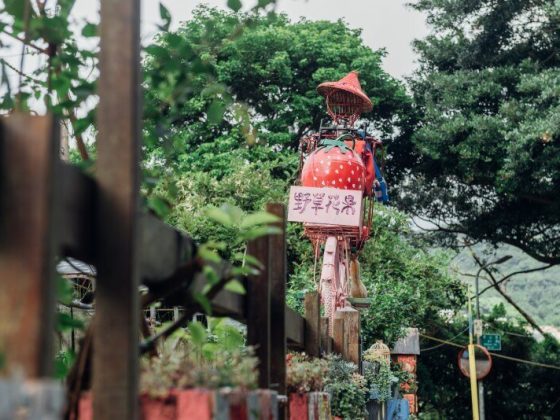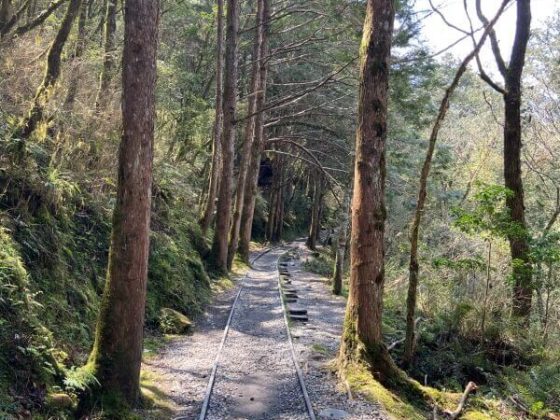In Chiayi county, the Alishan mountains are one of Taiwan’s most beautiful destinations for hiking. Referring to the wider Alishan mountains region, the Alishan National Scenic Area consist of three main areas, the Northwest Corridor, Provincial Highway 18 and the Tsou Culture Area. The Provincial Highway Corridor is where you’ll find the National Forest Recreation Area, which is where a lot of Alishan’s main hiking attractions can be found. From which trails to hike, what else there is to do, and how to get there, here is a guide to hiking in Alishan. (Read more: The best hiking trails in Taiwan)
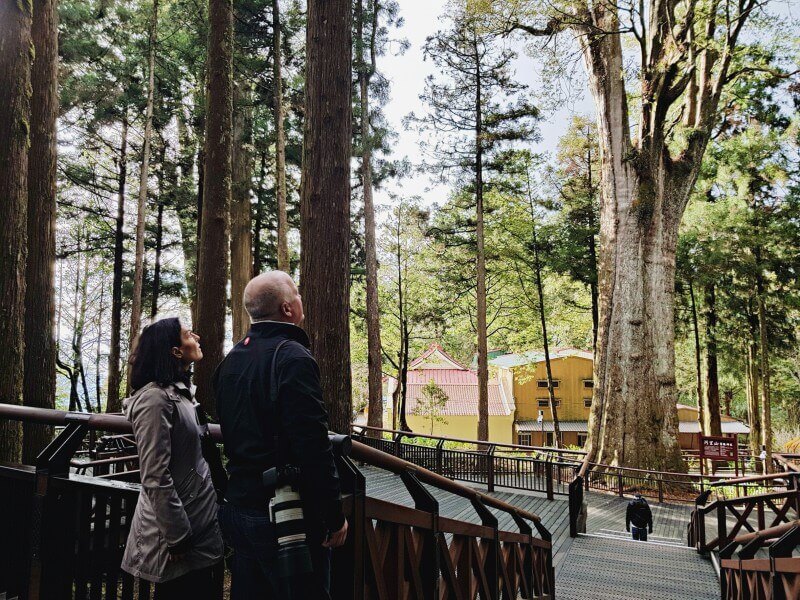
Top Hiking Trails in Alishan
– Giant Tree Trail (巨木群棧道)
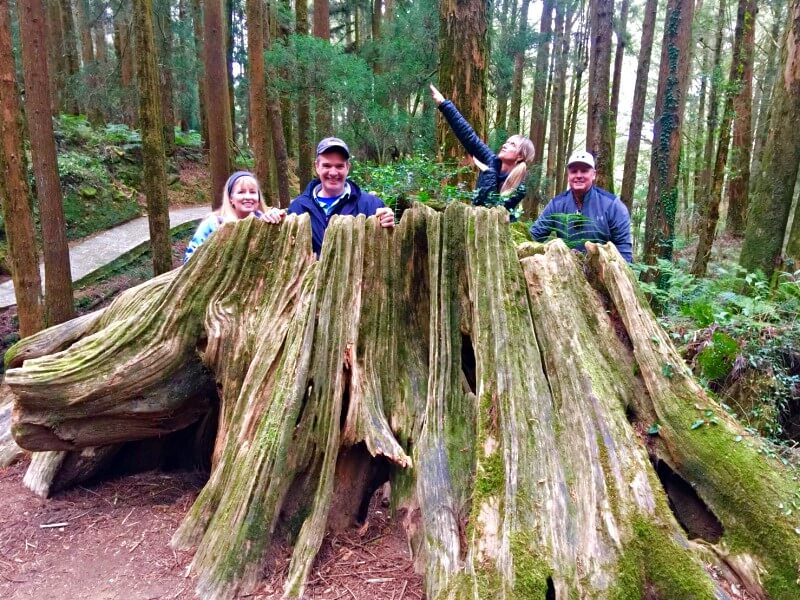
Very popular with first-time visitors to Alishan, the Giant Tree Trail is a misty trail divided into two sections, starting from Shenmu Station (神木車站) and the Xianglin Giant Tree (香林神木) respectively. Passing noteworthy attractions such as the Sister Pond (姊妹潭) and Shouzhen Temple (受鎮宮), the highlight of the trail is the Xianglin Giant Tree, a 43.5-meter-high Guangwu cypress (光武檜) with a 13.1-meter-girth trunk, often referred to as the second sacred tree of Alishan, that has been standing for more than 2,000 years. Alishan’s first sacred tree, succumbed to old age back in 1997, having stood for in excess of 3,000 years, including being set alite by lightning in 1956.
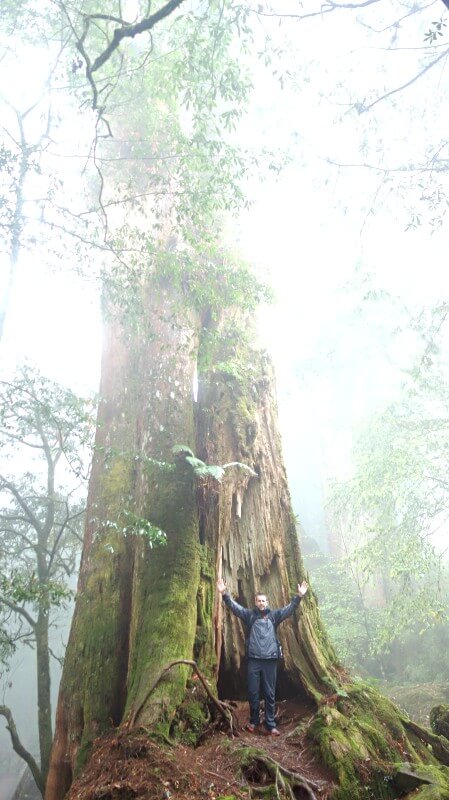

– Zhushan Trail (祝日觀山步道)
This trail is very popular with early-risers as it’s potentially the best spot in all Alishan to see the sunrise. The Zhushan viewing platform offers a panoramic 360-degree view of Alishan, including mountain peaks and even the Chianan Plain (嘉南平原). We can try describe it all we want, but you have to see it for yourself.
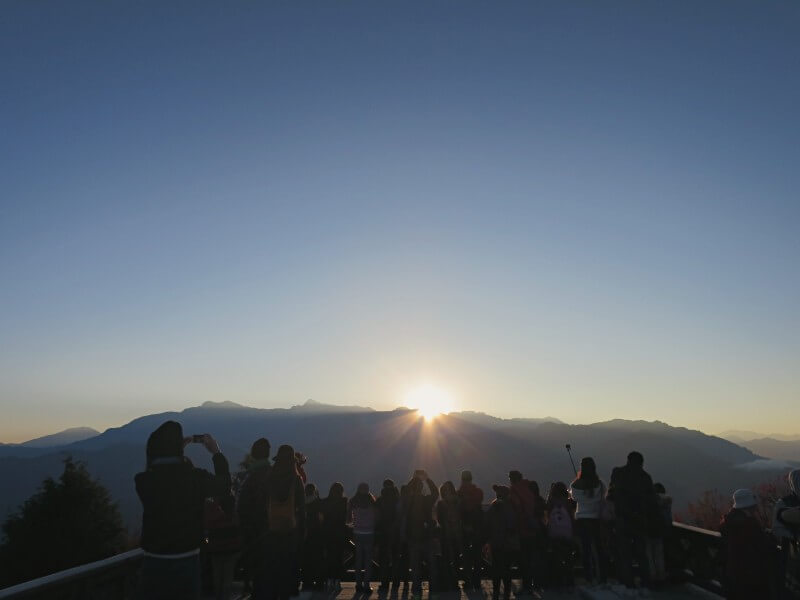
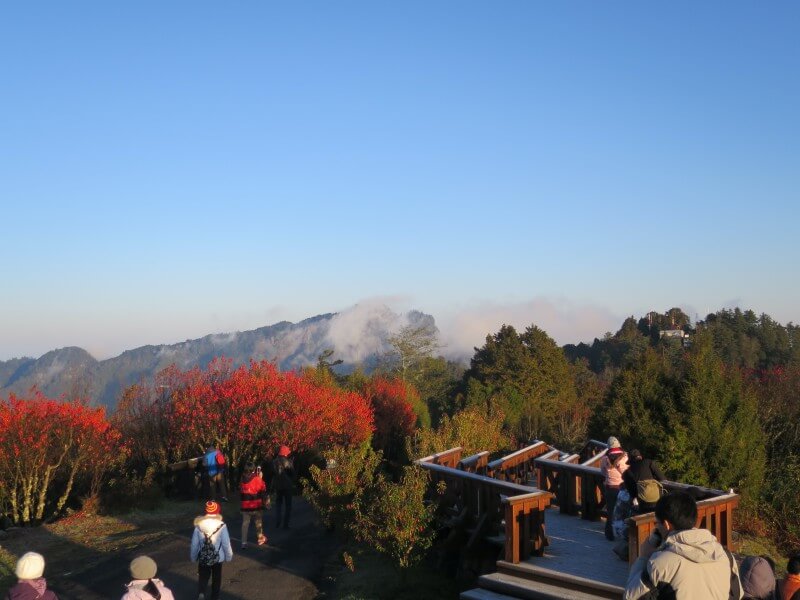
– Shizhuo Trails (石棹步道群)
Starting near Shizhuo off the Alishan Highway, the Shizhuo Trails consist of five hiking routes with a combined distance of 5km for visitors to enjoy: Mist Trail (霧步道), Tea Trail (茶步道), Cloud Trail (雲步道), Sunset Trail (霞步道) and the Sakura Trail (櫻步道). These trails offer breathtakingly beautiful scenery with scenes changing from shrouds of mist to clouds to sprawling tea fields. Again, words can’t really do it all justice.
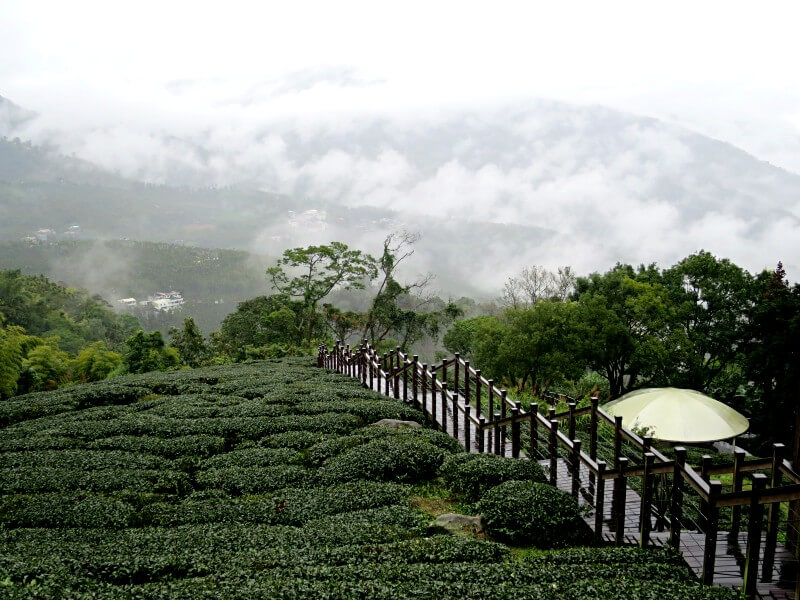
– Mihu Trail (迷糊步道)
The Mihu Trail, also known as the Mihu Historic Trail, is an easygoing 3.15km trail taking hikers through a bamboo forest and across two suspension bridges. Along the way there is a nice coffee shop where you can take a break and put your feet up, while on the way you may encounter monkeys, so be sure to keep any food you may have out of sight and out of reach. Check out this nice summary of the route from Taiwan Trails and Tales for some great images of the hike, as well as Youtiao the dog.
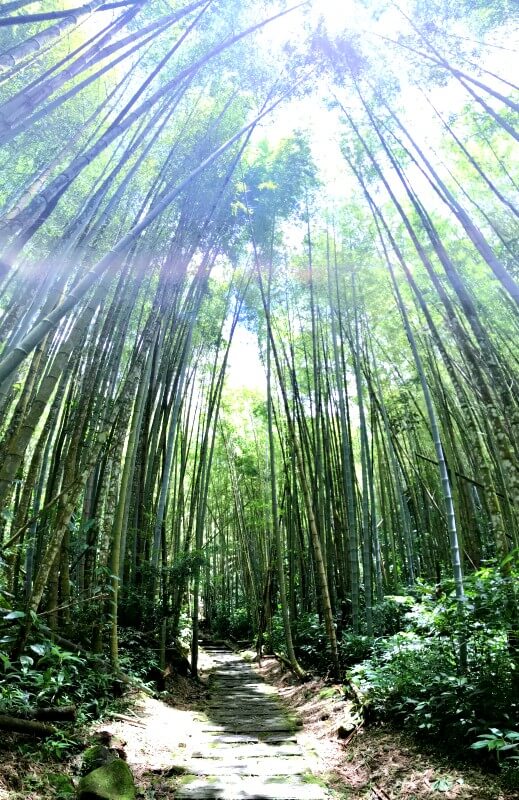
– Mianyue Trail (眠月線)
The Mianyue Railway Line closed in 1999 due to earthquake damage and has since transformed into a very picturesque hiking route. Following the railway line, the trail takes you through forest and tunnels, across elevated bridges as well as a long the railway tracks themselves. One for more experienced hikers, a permit is required to tackle this trail.
– Tefuye Historic Trail (特富野古道)
A more advanced route than the aforementioned few, the Tefuye Historic Trail passes through the woodland area between Alishan National Forest Recreation Area (阿里山國家森林遊樂區) and Yushan National Park (玉山國家公園). The hike is 6.32km one way from Zizhong (自忠) to Dabang village (達邦), and then the same 6.32km back, with the return route being uphill. If this sounds a bit much, you can always catch a bus from Dabang to Chiayi city instead of hiking back to Zizhong and we won’t judge you, we promise. Read this walkthrough of the route from renowned Taiwan travel writer Steven Crook to see how the route can best be tackled.
What else you can do in Alishan
– Tea tasting
Alishan is renowned for its High Mountain Tea, so you might as well take advantage of some of the local produce. Sheng Li Farm (生力農場) in Xiding is a great place to visit as not only does it boast beautiful views of the Alishan area from the Xiang Mountain Lookout, they also offer various tea-inspired cuisines for visitors to try, as well as cups of refreshing tea, of course. (Read more: Alishan – a world of High Mountain Tea up in the clouds)
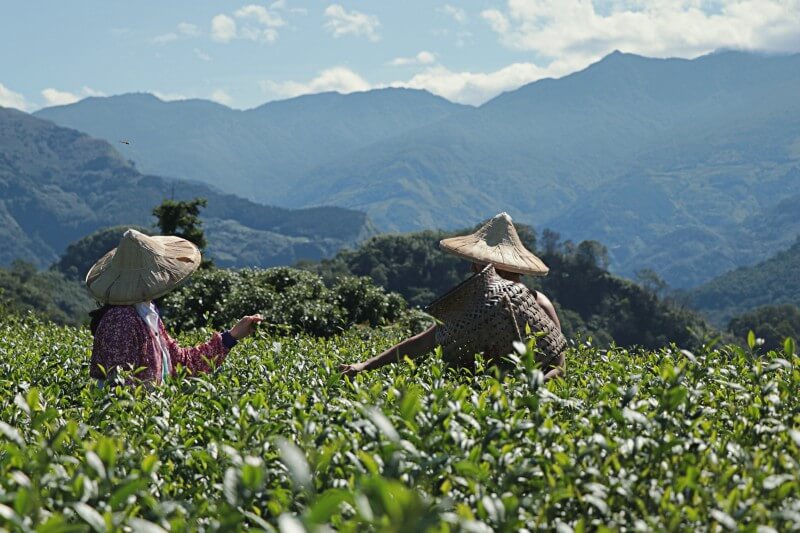
If you like flowers, try Alishanwin (飲山郁) Tea House, where roses are grown in the greenhouse for both viewing and tasting. Special tea flavors include rose oolong (阿里山玫瑰烏龍) and honey fragrance black tea (蜜香紅茶). You can also find the classic Alishan green tea (阿里山綠茶) and Alishan Jinxuan oolong (阿里山金萱烏龍). The Tea House itself is built in next to the tea fields, with French windows installed for guests to enjoy the foggy yet enchanting panoramic view of tea fields. (Read more: The Taiwan Scene Guide to Taiwanese Tea)
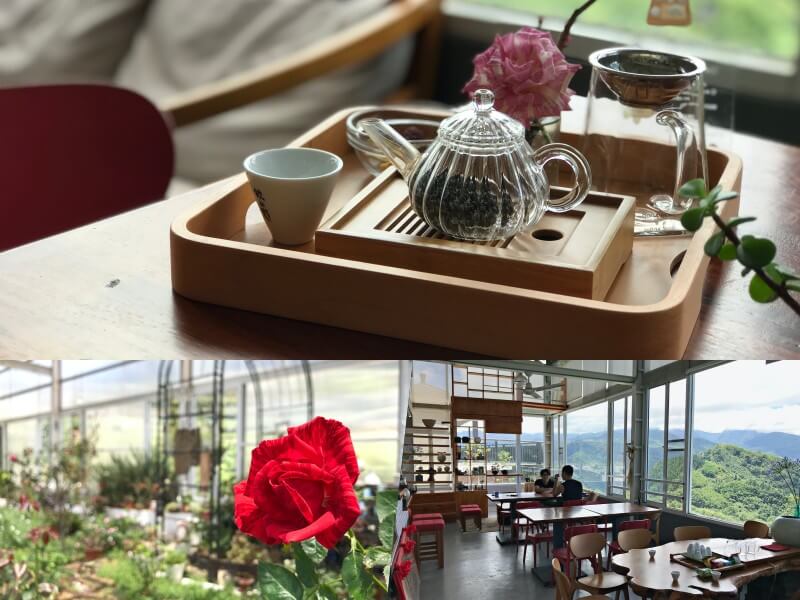
– See the cherry blossoms
If you visit Alishan in early spring, chances are you’ll see some blossoms. Several varieties of cherry blossoms bloom across the area during this time of year, such as pink Taiwan blossoms and white Fuji blossoms. From mid-March to mid-April, great places to take in the view include the entrance to the Zhushan Trail, Alishan Police Station and along the Giant Tree Trail, while if you find yourself on the hunt for blossoms in the winter time, your best bets are the Shizhuo Trail, Mituochan Temple and the Xiang Mountain Lookout. Also, in the springtime, don’t miss the opportunity for a train ride from Zhaoping Station where the trees form a cherry blossom tunnel of sorts. (You might also like: Flower Viewing in Taipei: Three Routes Recommended for Couples, Friends, and Families)
– Visit Alishan’s indigenous people
Alishan is home to the Tsou people (鄒族), an indigenous tribe based in the high mountains of Alishan for centuries. The bigger Tribes of Tsou people include the Dabang Tribe (達邦部落) and Tefuye Tribe (特富野部落), which take turns to host “Mayasvi”, the annual festival dedicated to their god of war. The event is usually held in February or August. Though visitors are welcome, please do follow and respect local customs and rules. For example, no standing up, walking, or talking during the official ceremony. (Read also: A Day of Indigenous Culture in Eastern Taiwan)
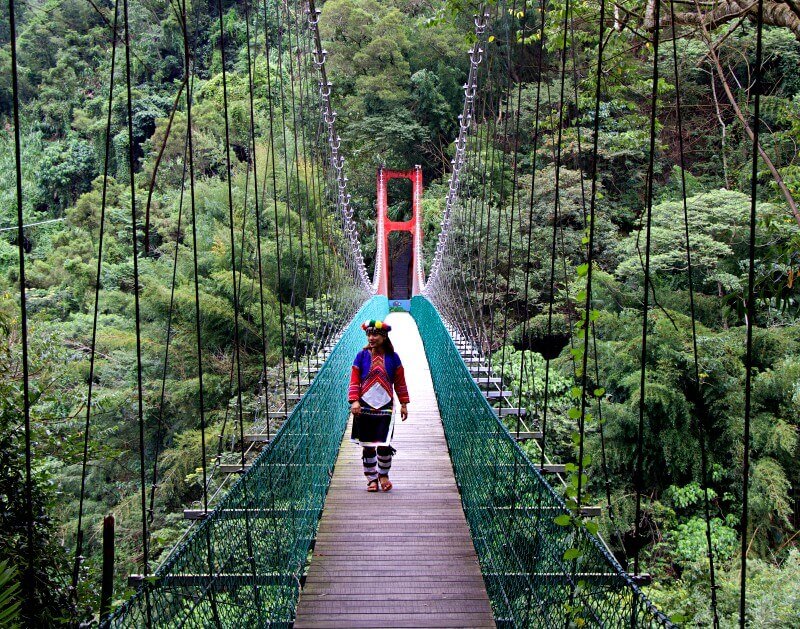
One thing that Taiwan’s indigenous people are famous for is their cuisine. If you can’t visit Alishan during the festival period, we’d recommend eating at YUPASU (游芭絲), a restaurant offering tasty indigenous dishes all year round. Must-tries such as sticky rice with bamboo, roast pork (wild boar, to be precise), and Maqaw (the pepper that the indigenous people use for seasoning) salad are served as parts of a set menu created with seasonal ingredients. (Read more: Indigenous Culture, not Food, is Taiwan’s Top Tourist Attraction)
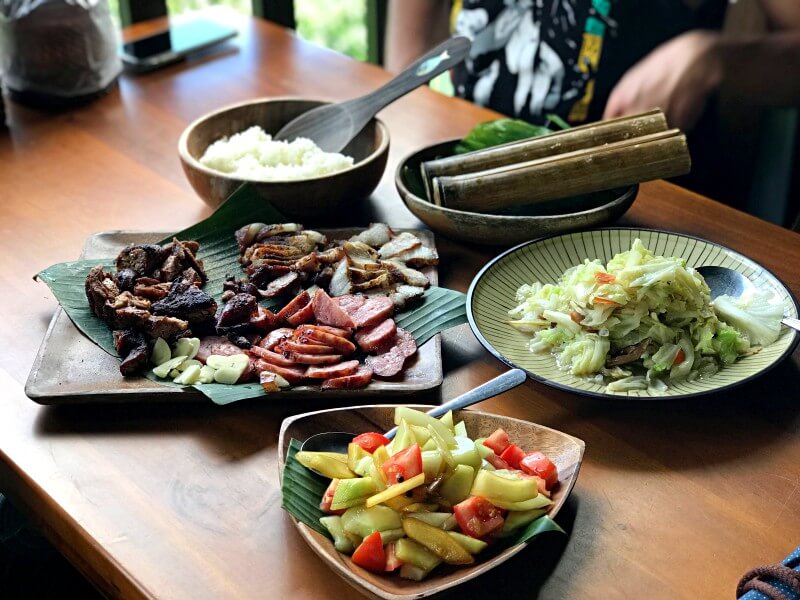
– Grab a Fenchihu Lunchbox
Having been sold for over half a century, the Fenchihu Lunchbox has been a popular staple with travelers in Alishan, particularly those riding the Alishan Forest Railway prior to the opening of the highway in 1982. Nowadays, the traditional lunchbox recipe remains, with the business having been restored by the owner of the Fenchihu Hotel, Lin Jin-Kun, following a decline in popularity of the lunchbox following the opening of the highway. You can find out more about the lunchbox here.
– Take a ride on the Alishan Forest Railway, the oldest forest train in Taiwan
Originally constructed for logging during the Japanese era, the Alishan Forest Railway is known for its unique Z-shaped switchbacks that were designed to adapt to the high-mountain landscape. Taking off from Chiayi City, the train will pass over 50 tunnels and 77 wooden bridges, with incredible scenery on the way to Alishan. Booking train tickets in advance is highly recommended. (see “how to get there” below). (You might also like: Visit Central Taiwan: How to Do Jiji, Nantou)
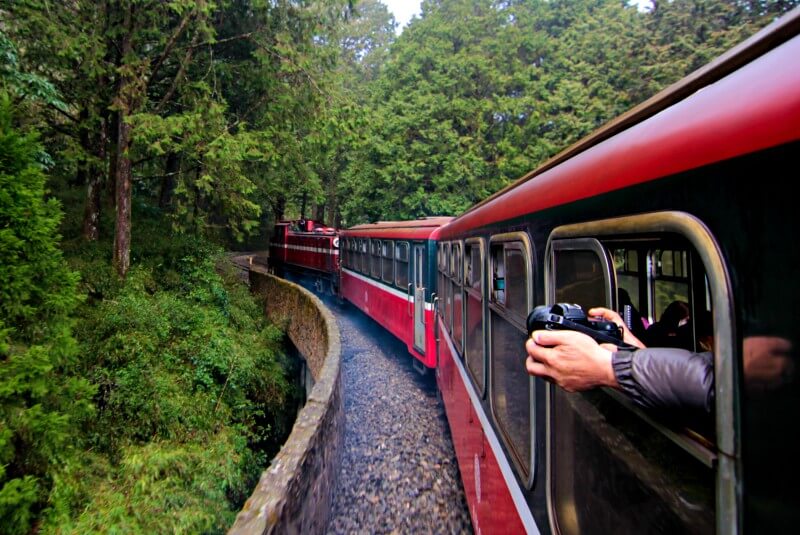
Where to stay in Alishan
Not a place for luxury travelers who want the five-star hotel experience, a lot of the accommodation in Alishan is fairly old, but that doesn’t mean it is of poor quality. In fact, all you really need your hotel room for is resting, as most of your time should be spent outside hiking and exploring. The best rooms Alishan has to offer are at Alishan House’s Modern Building (阿里山賓館現代館), which boasts both Western- and Japanese-style suites. You can also stay at Alishan House’s Historical Building, which has rooms that sleep up to four people. Cheaper options include the newly renovated A Building at Alishan Gou (阿里山閣A) as well as Alishan Shermuh Hotel (神木賓館).
How to get there
A popular way to get to Alishan is by taking the Alishan Forest Railway line which runs between Chiayi Station to Shihou Station. You can catch a TRA train or an HSR to Chiayi Station and go from there. Alishan Railway Station is also accessible off the Shenmu Line and the Zhaoping Line. The online booking system is available in English. The system starts from 6am every day (and closes at 12pm), releasing available tickets for the next 15 days. However, due to its limited seats and popularity, it usually sold out within seconds after 6am (yes, people wake up early just for booking tickets).

If you failed to get the train tickets (you’re not alone), there are several buses run to Alishan and the nearby towns from Chiayi City. For those who are departing from the HSR Chiayi station, use Alishan Route A of the Taiwan Tourist Shuttle. Meanwhile, Alishan Route B of Taiwan Tourist Shuttle departs daily from TRA Chiayi Station. Both cost NT$120-150 for one way. (A kind reminder: scroll down to the third page after clicking the links above for the timetable in English.)
Lastly, if you have a car or are renting a car, you can also get there off the Provincial Highway, which takes about two hours from Chiayi city center.


